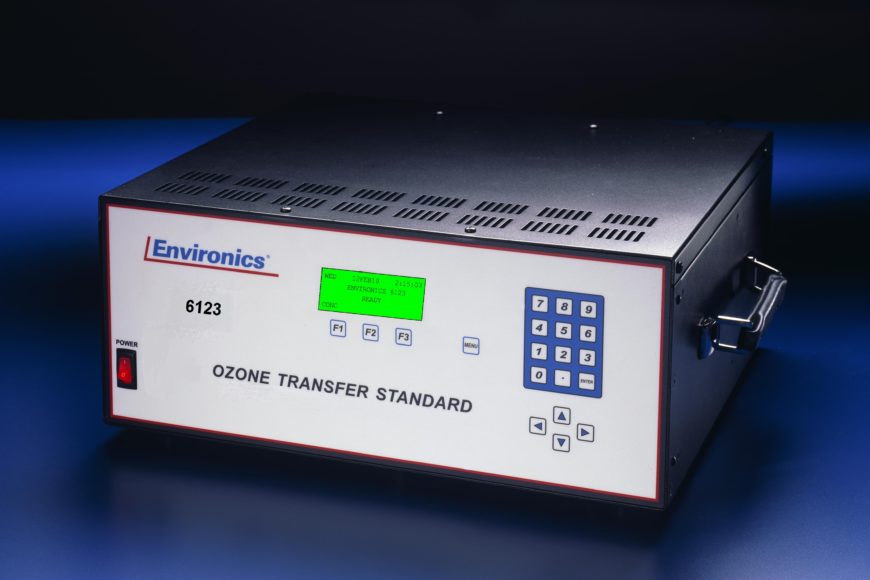
Ozone (O3) is a highly reactive form of oxygen that consists of three oxygen atoms, enabling it to break down contaminants and pollutants effectively. It’s abundant in the earth’s atmosphere and is routinely generated as a byproduct of human activities. But ozone is also a powerful process gas with a raft of industrial applications. The powerful oxidizing properties of ozone make it an effective disinfectant that can neutralize a wide range of bacteria, microorganisms, protozoa, volatile organic compounds (VOCs), and so on. Hence, ozone generation is an important process.
Ozone generators not only play a vital role in producing ozone mixtures and standards for industrial and research usage, but are also integral for calibrating ambient analyzers. Understanding the advantages and limitations of ozone generators is essential for selecting the most suitable system for your needs. Generators for calibration, for example, only need to generate low levels of ozone but with extreme precision. This article will discuss the benefits, drawbacks, and key considerations for ozone generators in ambient analyzer calibration.
Advantages of Ozone Generators
- Accuracy: Environics’ ozone calibration technology, combined with thermal mass flow controllers (MFCs), can produce highly precise and accurate ozone concentrations. Our ozone calibrators and dilution systems exceed the accuracy required by the EPA for Ambient Calibrators, ensuring that ozone concentrations are controlled and monitored effectively. In addition, ozone generators can be optimized for low levels of ozone, down to 5 ppb to meet 40 CFR Part 58, Appendix A requirements at NCORE and trace sites.
- Precision: Ozone generators allow for controlled ozone production, which is crucial for calibration purposes. They use photo-optical feedback circuits to support the generation of ozone with reliability of within 2%.
- Custom Solutions: Ozone generators can be tailored to meet specific calibration needs. At Environics, we specialize in custom systems designed to meet the unique needs of our customers. With thousands of systems in the field, we have developed an extensive library of applications and solutions, making us the world leader in user-friendly computerized gas flow instrumentation.
Limitations of Ozone Generators
- Maintenance: Proper ozone generator maintenance and calibration are crucial to ensure consistent ozone production.
- Technical Complexity: Operating and maintaining ozone generators require a certain level of technical expertise. Improper use or maintenance can lead to inaccurate calibration results.
- Software Updates: With the recent update to the absorption cross-section value for surface ozone measurements, older units may require software updates or hardware modifications to ensure accurate calibration. This can add to the complexity and cost of using ozone generators for calibration.
Choosing the Right Ozone Generator: Key Factors to Consider
Selecting the right ozone generator requires considering several key factors. One of the main decisions is whether photometric control of the ozone is required. Environics® Series 6123 Ozone Transfer Standard with Photometer is a great choice to guarantee accurate ozone production and measurement. Regular maintenance and calibration are essential for maintaining the performance and accuracy of ozone generators, so look for a system with accessible calibration tools and support. It is also important to consider the current absorption cross-section for atmospheric ozone calibrations. This parameter has been called into question in recent years, with a consensus suggesting the uncertainty be significantly decreased.. Finally, understanding your specific application requirements, such as desired ozone concentrations, exposure times, and system size, will help you choose the most suitable ozone generator for your needs.
Are You Ready to Improve Your Industrial Gas Mixing Process?
In summary, ozone generators offer significant advantages for ambient calibrations. We have been proactive in keeping up-to-date with the latest scientific advancements, offering new operating software to the update the absorption cross-section if and when needed. This would involve a relatively simple EPROM swap. Newer units feature PC501 operating software which can be adjusted via various methods.
If you are interested in learning more about ozone generation, read our previous article on the Photometric Procedure for Ozone Transfer Standards.
If you require more information about ozone generators, ozone transfer standards, or custom gas mixing solutions, contact Environics today. Our team is dedicated to customer service before, during, and after your system is built, and we stand by our systems, believing in building long-term relationships with our customers. Let us help you find the most suitable solution for your needs.

